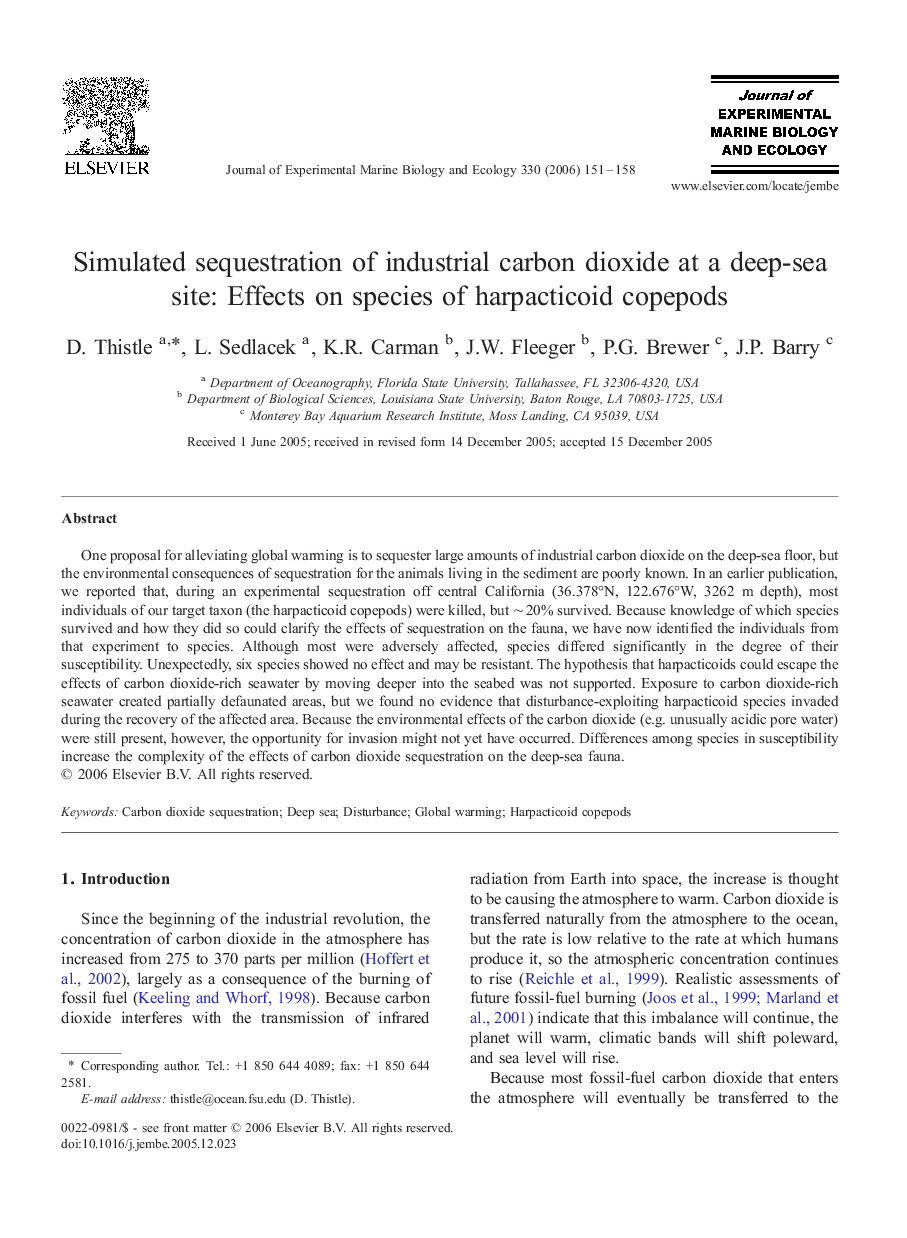| Article ID | Journal | Published Year | Pages | File Type |
|---|---|---|---|---|
| 4398214 | Journal of Experimental Marine Biology and Ecology | 2006 | 8 Pages |
Abstract
One proposal for alleviating global warming is to sequester large amounts of industrial carbon dioxide on the deep-sea floor, but the environmental consequences of sequestration for the animals living in the sediment are poorly known. In an earlier publication, we reported that, during an experimental sequestration off central California (36.378°N, 122.676°W, 3262 m depth), most individuals of our target taxon (the harpacticoid copepods) were killed, but â¼Â 20% survived. Because knowledge of which species survived and how they did so could clarify the effects of sequestration on the fauna, we have now identified the individuals from that experiment to species. Although most were adversely affected, species differed significantly in the degree of their susceptibility. Unexpectedly, six species showed no effect and may be resistant. The hypothesis that harpacticoids could escape the effects of carbon dioxide-rich seawater by moving deeper into the seabed was not supported. Exposure to carbon dioxide-rich seawater created partially defaunated areas, but we found no evidence that disturbance-exploiting harpacticoid species invaded during the recovery of the affected area. Because the environmental effects of the carbon dioxide (e.g. unusually acidic pore water) were still present, however, the opportunity for invasion might not yet have occurred. Differences among species in susceptibility increase the complexity of the effects of carbon dioxide sequestration on the deep-sea fauna.
Related Topics
Life Sciences
Agricultural and Biological Sciences
Aquatic Science
Authors
D. Thistle, L. Sedlacek, K.R. Carman, J.W. Fleeger, P.G. Brewer, J.P. Barry,
